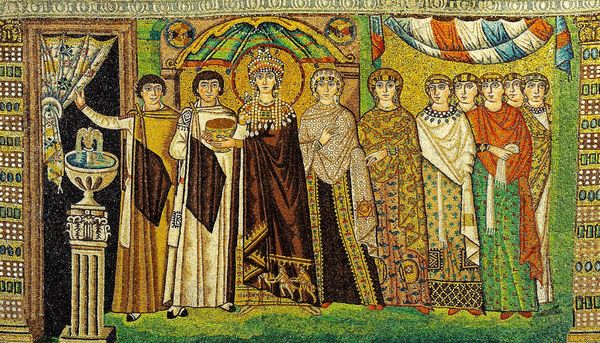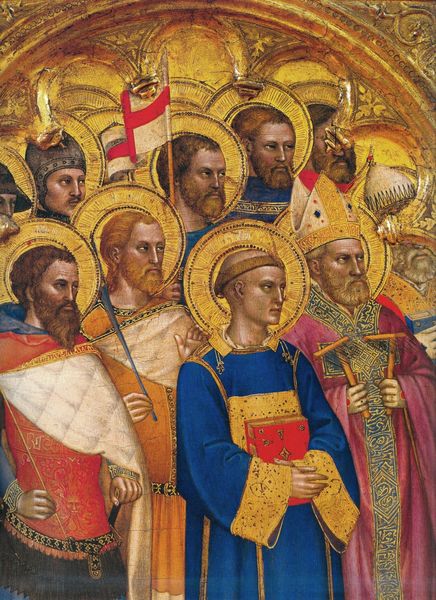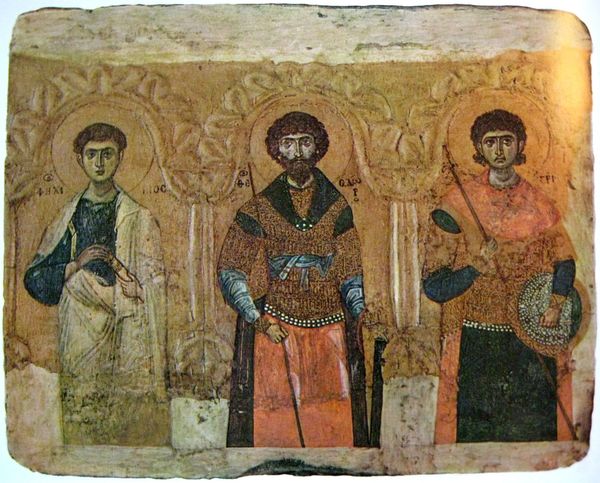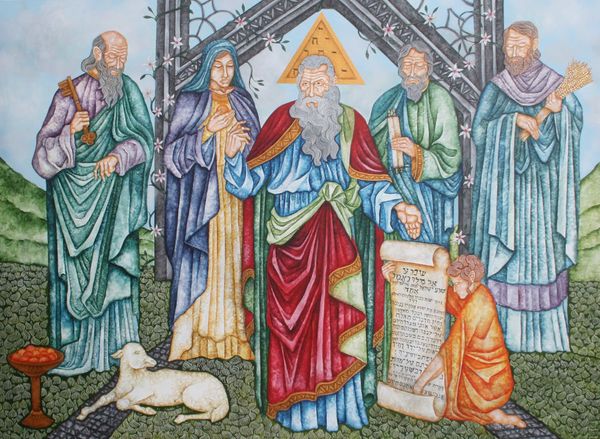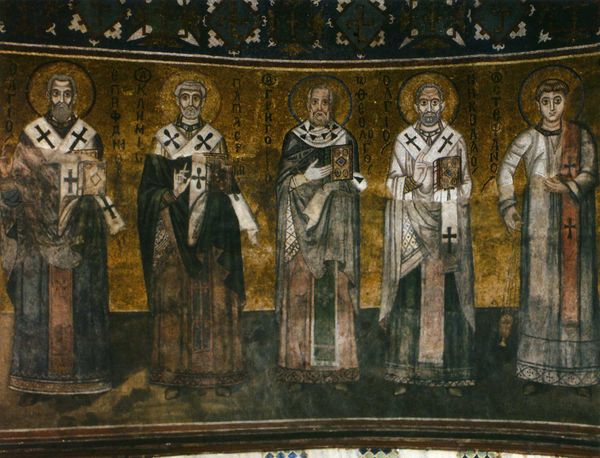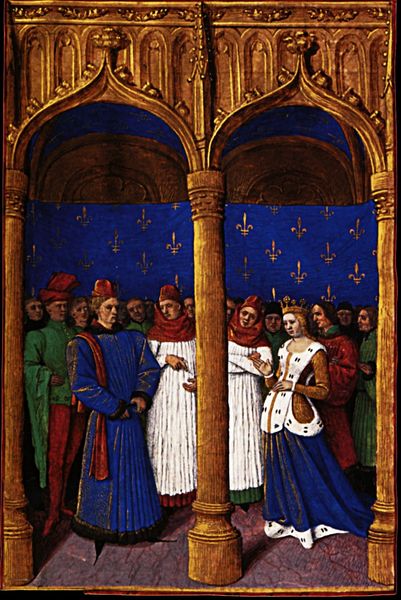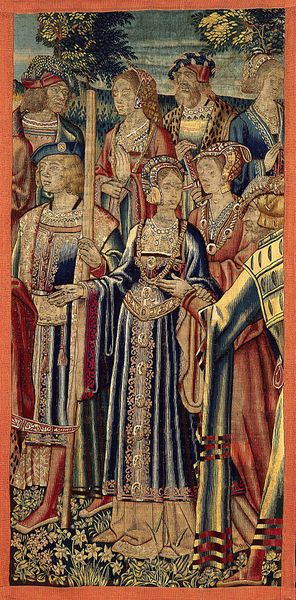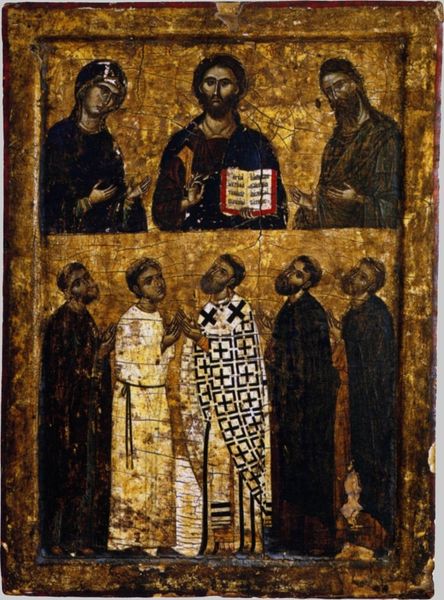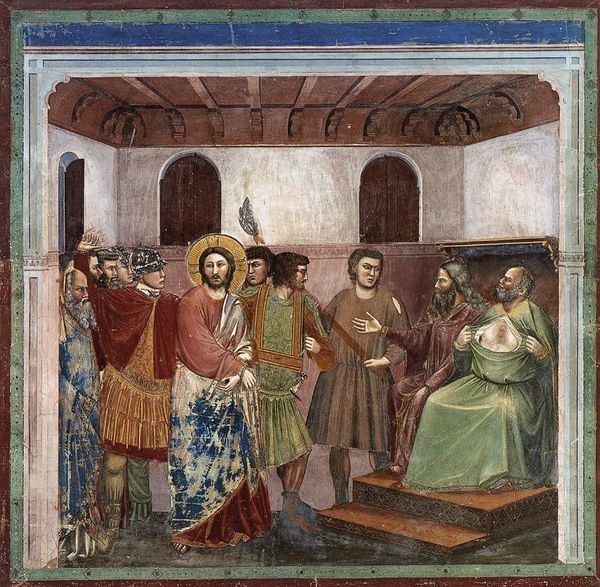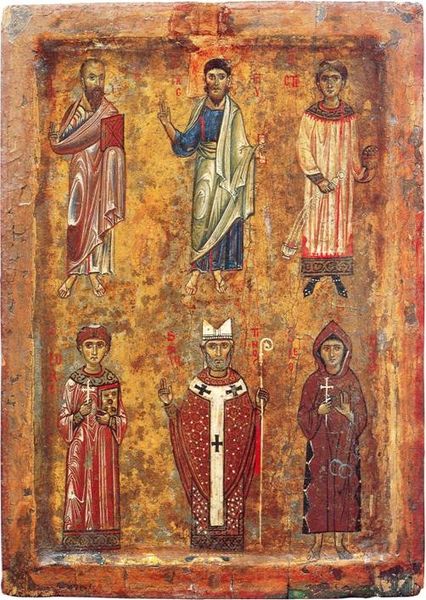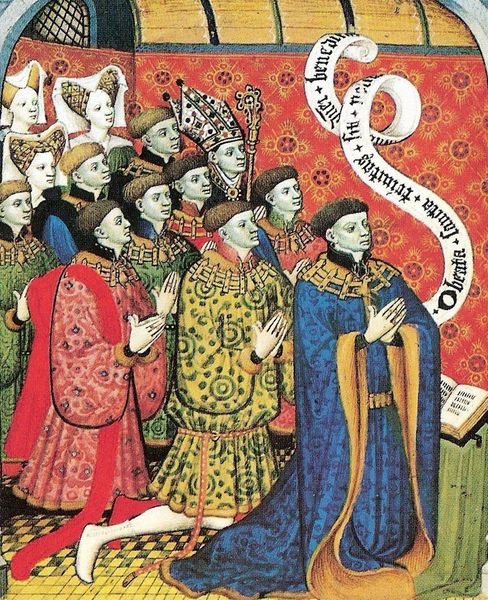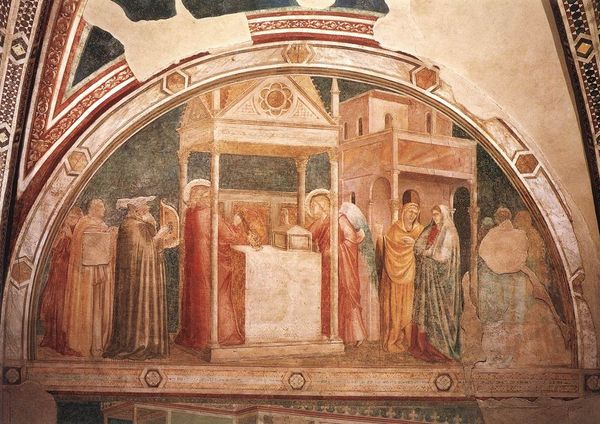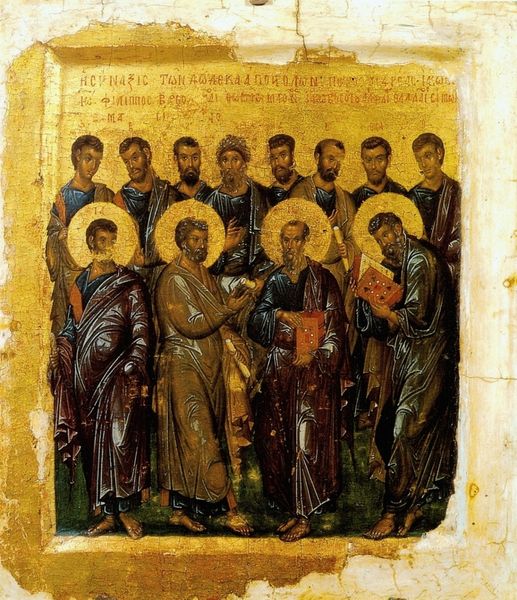
mosaic
#
portrait
#
mosaic
#
byzantine-art
#
figuration
#
history-painting
Copyright: Public domain
Curator: This is a depiction of Emperor Iustinianus and His Suite, an awe-inspiring mosaic created around 547 CE. You’ll find this resplendent work in the Basilica of San Vitale, located in Ravenna, Italy. Editor: Wow, there's something so strikingly direct about it. The gaze of those figures! They don’t meet our eyes so much as they seem to claim space. It makes me think about power. Curator: Indeed, the frontal pose and rigid formality contribute to the mosaic's iconic quality, emphasizing the Emperor's supreme authority. Notice the careful arrangement of the figures. Editor: Absolutely. And beyond composition, thinking about the real politics here. Justinian consolidated power ruthlessly. His religious policies repressed non-Chalcedonian Christians, his campaigns involved massive civilian casualties... it's not hard to see these policies as influencing, even necessitating, the creation of a static image, of divine rulership outside history. Curator: Quite, but consider too how this stylization operates visually. The use of tesserae—small pieces of colored glass—creates a shimmering effect. Editor: They’re incredibly opulent, yes, but this artifice serves to de-realize. There is a denial of corporeal reality in favor of immutable idea—something to bear in mind when remembering that Empress Theodora's inclusion indicates how revolutionary it was at the time. I'd also stress the figures around Justinian—the military, the clergy, the administrators; not just attendants, they all uphold the legitimacy of the emperor's divine right. Curator: Precisely. Further, the use of color serves to distinguish and elevate Justinian from his suite, highlighting his central role. This rigid formality visually reifies a strict social hierarchy. Editor: And a theological one too, when you see the bread in the chalice, in Justinian's hands: this represents not just him but the Christian Empire enacting a right to world order. I wonder, though, does this reading still resonate? Curator: These figures seem fixed in a historical matrix. Yet, they still project outward from it. Perhaps that is how mosaics function. It’s hard to say… Editor: Maybe that’s the point: We keep viewing and viewing to find answers and yet they will never come; our historical conditions inevitably reflect off of that.
Comments
No comments
Be the first to comment and join the conversation on the ultimate creative platform.
